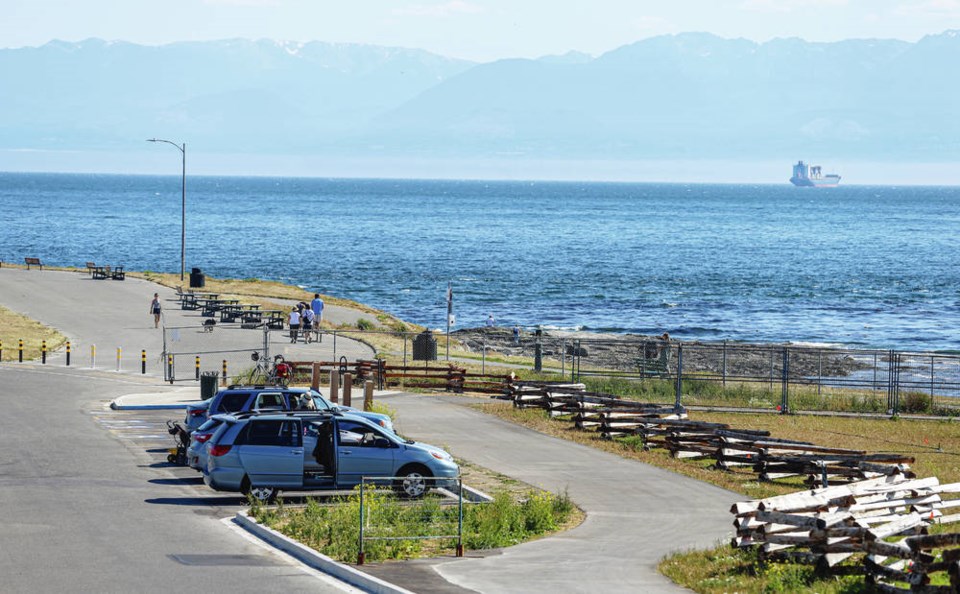A commentary by a social-enterprise housing developer and owner of Urban Thrive who actively participates on local issues related to urban design, transportation and housing, and advocates for sustainable urban development.
I’d like to build on what Victoria Mayor Lisa Helps argued in her blog post on Clover Point, and help put into perspective some of Andrew Weaver’s “greenwashing” criticisms in his commentary “Don’t use climate change as an excuse for bad ideas.”
When a change is proposed in our community, we often get overly focused on the specific topic of debate (Clover Point, new sections of bike lane, pedestrianizing Government Street, and so on) and miss how it fits into the bigger picture.
Urban design is a complicated and imperfect field, where a multitude of complex issues converge. Where our past, present and future affect decisions. Where social, economic and environmental tensions overlap. So, it’s no surprise that even a climate scientist misses the connection between the redesign of a public space and climate change.
The impacts of climate change have been made abundantly clear to us this summer. Everyone knows we need to reduce our dependence on fossil fuels, which was the dire call to action from the most recent report from the Intergovernmental Panel on Climate Change.
To do that we absolutely must address our dependency on private car ownership which is, by far, the single largest source of emissions in our region. Even electric vehicles have significant embodied carbon in their manufacturing.
But the change to Clover Point is so much more than just reducing car trips to Clover Point. It’s about gradually shifting away from a culture where, for most of the past century, we have maximized the convenience of driving a car.
It’s about building walkable neighbourhoods and investing in cycling, transit, car-share and other sustainable modes. It’s about raising the next generation of kids with different expectations around mobility — where owning a car is optional and travelling by bike is ordinary. This is not unique to Victoria or Helps — it’s a global trend supported by a strong consensus among experts and an abundance of evidence.
This approach is not only the most widely accepted approach to reducing carbon emissions in our cities, but it also makes for safer streets, improves public health, promotes more affordable forms of housing and lifestyles, reduces infrastructure costs and broadly improves the livability and inclusivity of a city. A sweet spot in the convergence of complex issues.
That said, let’s recognize that some people need a car to get around — due to age, disability or employment requirements. These are important reasons for driving a car and we must not exclude them from normal urban life. However, we cannot use these as excuses for why we should perpetuate car dependency and favour driving convenience over more sustainable transportation alternatives.
A realistic short-term goal is to help most families become “car lite” (families who own a car but use more sustainable alternatives as often as possible).
To achieve that, we need to make those alternatives safer and more convenient, and make public spaces (like Clover Point) less car-oriented. Some of those changes will make driving less convenient, and that’s a tradeoff we absolutely need to make.
It’s also a tradeoff that can be achieved while accommodating those with mobility restrictions.
City staff will be the first to admit the interim design at Clover Point needs work. I hope they lean further into a people-orientated design for Clover Point, making it a true destination, but reverting it to a parking lot would be tragic.
Climate change is a global problem but we have a very real local responsibility to do everything we can to reduce our carbon emissions. I’d take it a step further to say we should aspire to be a model of sustainable urban development.
Victoria is uniquely positioned to demonstrate how we can live within the limits of the one planet we have while creating a vibrant, thriving, inclusive city.
My family of five chooses to live without a car, as do many others. Still more own a car but use alternatives as much as possible.
I’d encourage readers to be patient with the interim Clover Point design — it’s a work in progress — and view it as a small piece in a broader culture change.
While you may not want to embrace driving less in your own life, I hope you can be understanding and accepting of others who choose a lighter way of living and the positive changes that will bring to our beloved city.
- - -
To comment on this article, write a letter to the editor: [email protected]



